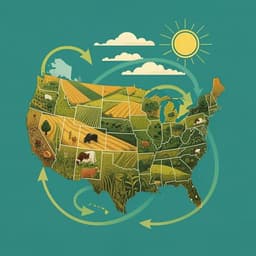
Agriculture
Irrigation benefits outweigh costs in more US croplands by mid-century
T. Partridge, J. Winter, et al.
This research investigates the economic implications of both current and expanded irrigation practices for maize and soybean in the U.S., revealing that mid-century benefits may outweigh costs, particularly for soybean irrigation in the Midwest and Southeast. Conducted by Trevor Partridge, Jonathan Winter, Anthony Kendall, Bruno Basso, Lisi Pei, and David Hyndman.
Playback language: English
Related Publications
Explore these studies to deepen your understanding of the subject.







